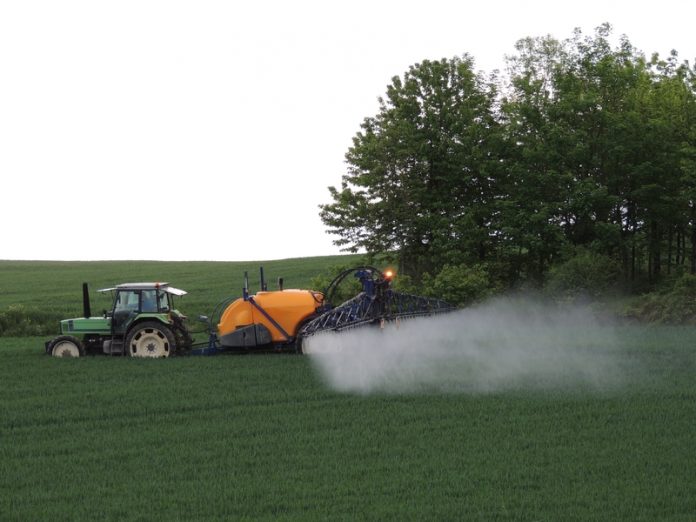Alberto Mantovani, Research Director at Istituto Superiore di Sanità reveals how the European Commission is taking action on endocrine disruptors (EDCs) and calls for a multidisciplinary network of cross-cutting silos
On November 7th 2018, The European Commission issued the Communication “Towards a comprehensive European Union framework on endocrine disruptors (EDCs)”. The document originates from a prolonged (somebody would say lengthy, tiresome and timid) elaboration with the European scientific agencies (EFSA, ECHA), Member States and stakeholders and addresses the EU governance bodies (Parliament, Council, Economic and Social Committee, Committee of the Regions). Since the document illustrates the European perspectives for action, it may have a global resonance beyond the EU.
The Communication reiterates the importance of EDC-related issues for environment, health and consumer safety and points out the steps already achieved; the criteria for identifying EDCs under the legislation on pesticides and biocides, the progress of REACH implementation, specific provisions (e.g., ban of bisphenol A and the UV-filter 3-benzylidene camphor in baby bottles and cosmetics, respectively). Notwithstanding the apparent slowness of progress, the EU can claim the most advanced regulatory framework on EDCs worldwide.
The most interesting sections of the EC communication outline further actions to improve the science-based governance of EDC-related problems. Below is a summary, flavoured with some of my own thoughts.
First of all, some main knowledge gaps are pointed out:
The impact of EDCs exposure on human health and ecosystems and the possible interplay with other risk factors for endocrine-related disorders (e.g., nutrition) or wildlife (e.g., climate changes).
This major issue would deserve more room for comments. Just one example is that human studies are increasingly used for risk assessment: a critical point is the measurement of internal exposure (biomonitoring) to the many non-persistent, yet widespread, substances which may make up the bulk of EDCs exposure in the general population, such as phthalates and bisphenols.
Taking these groups of EDCs, urine sampling is mainly recommended for exposure assessment; however, this may measure short-term excretion, rather than a toxicologically relevant internal dose. Blood, serum or plasma are not considered as ideal matrices by the majority of experts, but possibly because of limited knowledge on factors influencing variability; data on deposition in hair or nails would be of interest, but are currently too limited to draw any conclusion. As a result, the exposure assessment of such important EDCs as bisphenols and phthalates (and others as well, like parabens etc.) currently relies on measurements in urine, which may not be the optimum solution.
The definition of a dose below which no adverse effect is expected to occur (“threshold dose level)”; this is still controversial; at least for those EDCs that elicit genome expression changes by acting through nuclear receptors. The application of the threshold concept (which is widespread in toxicological risk assessment) to EDCs might be questioned especially when exposure occurs in vulnerable developmental windows. If the existence of a threshold is not be supported by robust data, EDCs might be considered in the same way as mutagenic/genotoxic agents (substances able to cause transmissible changes to the cell genome), therefore, ranking amongst the “top concern” chemicals.
Moreover, the issue of mixture/cocktail effects is a priority for the toxicological risk assessment in general; it is particularly outstanding for EDCs, because of possible low dose effects and of widespread exposure through environment and diet, to different substances that can hit the same endocrine pathways.
In order to realise the full potential of EU legislation actions, a horizontal approach for the identification of EDCs should be built across EU legislation domains, making avail of the criteria developed for pesticides and biocides. Therefore, up-to-date and consistent data requirements should be set in the different legislative frameworks.
Also, more support should be given to data sharing and monitoring activities and further efforts should be devoted to the capacity building of risk assessors and risk manager through guidance documents and training. This process has to be EU-wide and inclusive, involving the EU Member States that had a limited presence in the EDCs debate till now.
Moreover, it is eventually recognised that debate and action must not be limited to the European Union or the “western world” (whatever it does mean): the document endorses bilateral co-operation and exchange of information on EDCs with global trade partners of the EU, including China. Taking this proactive approach, the search for such interactions with other major partners (Brazil, India, Russia, etc.) will likely emerge in the near future.
The section of top interest for governance is represented by the EDC-relevant Commission initiatives currently being considered by the European Parliament and Council, or in the process of being implemented, that include:
- The proposed new Regulation on transparency and sustainability of risk assessment under EU food law, to increase trust in the regulatory process, including the assessment of high-concern substances;
- The European Plastics Strategy, to accelerate the substitution of substances of concern and promote recycling;
- The revised Drinking Water Directive;
- The New Deal for Consumers and the Goods package, to improve the enforcement of product safety requirements;
- The update of the legal framework on Occupational Safety and Health.
Interestingly, the European Commission remarks that the role of research is for a more sustainable, or resilient and living environment. Science is called to find solutions: the elimination of substances of concern in the production and end-of-life phases (the EU legislation will likely lead to banning or severe restrictions of substances with important uses in industry, agriculture, etc.); the development of safe substitutes, as well as safe and cost-efficient production technologies; eco-innovation for the prevention and remediation of environmental pollution from EDCs, looking also at the interface between chemicals, products and waste.
The risk assessment might have deserved more attention. The current legislative framework pivots on the identification and restriction of EDCs. But what about EDCs that already entered environment and food chains? Some EDCs are also persistent and bioaccumulative substances, leaving a “legacy” throughout years and to the next generation(s), including the “emerging” polybrominated and perfluorinated substances. Tackling the EDCs legacy calls for resilience-aimed strategies, which have to be based on the definition of protection goals, hence on risk assessment.
While some points unavoidably deserve further debate or refinement, the Communication undeniably represents a step forward; it outlines valuable future actions to be implemented – hopefully – by the next Commission. As pointed out by the Communication and previously discussed in Open Access Government, minimising the EDC-related risks calls for a network of knowledge, and for the integration cross-cutting the silos of different scientific fields.
Please note: this is a commercial profile
Alberto Mantovani
Research Director
Istituto Superiore di Sanità – Roma, Italy
Tel: +39 06 4990 2815











